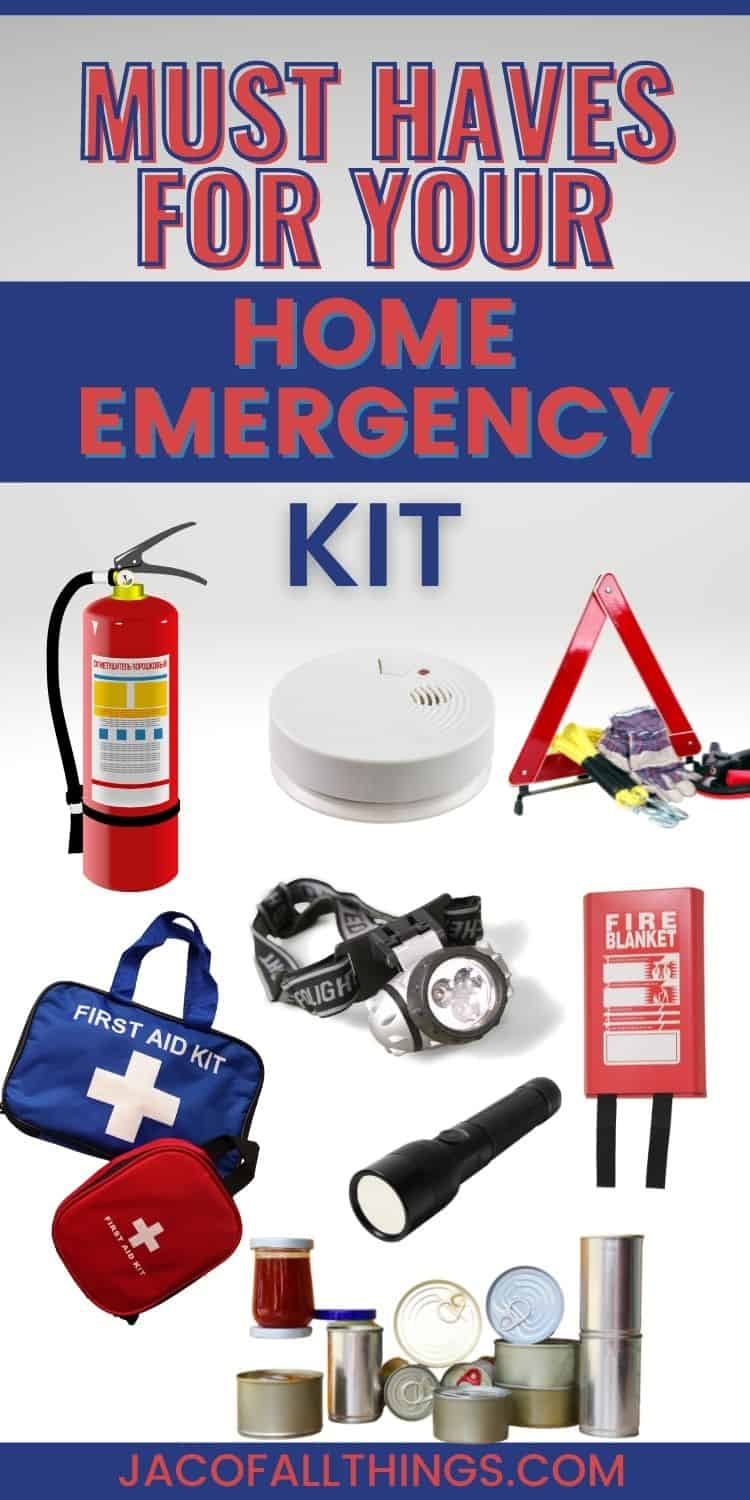A lot of people go through life without giving much thought to what would happen if they suddenly found themselves in a situation where they needed some kind of emergency assistance.
Since emergencies can strike at any time, it’s wise to be prepared for them by having the right tools and supplies on hand.
In this article, we will discuss how you should prepare your house for all kinds of emergencies.
This post may include affiliate links. As an Amazon Associate I earn from qualifying purchases. Read the full disclosure here.
Once you know you have what you need in the event of an emergency, you don’t have to carry the burden of worrying about it further. (The good news is everything on this list can be purchased on Amazon. You can even find a rolled-up list of all of these items here. Put them in your cart, and move your brain into thinking about happy thoughts.)
Before we cover a suggested list of what you should have in your house for emergencies, I’d like to share a personal story.
It was a rainy day in March. You couldn’t even call it day yet…The sun was just starting to peek through the night sky, and our family was peacefully sleeping. Suddenly the sound of alarms woke us up in fear. A robotic-like voice came from our ceiling, warning that carbon monoxide was detected.
I’ve never raced so quickly out of my room into my daughter’s rooms. My husband with one, and me with the other, we grabbed them in our arms and raced outside in our pajamas and slippers.
Part of me felt silly. Here we were all standing outside in the rain, soaking through our pajamas. Only one of our CO2 alarms was going off, so part of me just thought it was a faulty alarm. (We had CO2 detectors on each level of the house, but only our ceiling unit by the bedrooms was alarming.)
Our fire department arrived within minutes and evaluated the situation. Three trucks, and a half dozen firemen! After what felt like forever, one of them came over to us. His first words were “You are very lucky.”
The levels in our house were around 65 parts per million (ppm). It turns out, the brand-new furnace that we had purchased just weeks earlier was not installed properly and emitting CO2.
Yes, we were lucky. At the end of the day, no one was hurt, and there was no permanent damage. However, I could not get over my anxiety of “what ifs”. I was stuck asking myself why did only one of our CO2 alarms go off? Scenarios started playing in my head and I knew we really should be more prepared in the event of an emergency.
This list is intended to provide you with suggestions of items to have in your house for emergencies. Hopefully, they are never used but provide comfort that you are prepared in the event of an emergency.
What to have in your house in the event of an emergency
Smoke detectors
Your family should have one smoke detector on every level of the house. Test monthly, and replace batteries yearly.
Carbon monoxide detectors
A carbon monoxide detector is a must if you have gas appliances in your home. Never place a generator near a window so as not to be overcome by fumes. You should have one on every level of your house, including your basement.
We have a combination of in-ceiling detectors and plug-in detectors.
First aid kit
A first aid kit is essential. You can pick up an all-in-one kit, or just put together your own. At the least you should have bandages, gauze pads and tape, antiseptic wipes, a chemical ice pack (e.g., ammonium nitrate), tweezers, pain reliever (e.g., ibuprofen), over the counter antihistamines, and hydrocortisone cream.
Safety kit for home
The Red Cross has a great resource where you can create your own safety kit for your specific needs. Here is an example of contents to include: Flashlight with extra batteries, portable radio with batteries, whistle, dust mask, plastic sheeting, and duct tape.
Water
You should have at least a three-day supply of water for each member of your family. You will need one gallon per person per day with an additional one gallon per pet.
Non-Perishable Food
You should have at least a three-day supply of food per member of your family with an additional one gallon per pet. Make sure you also have a can opener if your food requires one.
First-aid book
Having a first aid book in your safety kit would be helpful when trying to treat injuries in the event of an emergency. There are numerous books available on Amazon! If you don’t want to purchase a specific book, there are numerous sites online that provide tutorials.
Emergency car kit
Your car should have the following items at all times: cell phone with charger, booster cables, tow rope, shovel, sand, or kitty litter (for traction if you get stuck in the snow), flares, reflectors, and an emergency flashlight.
Fire extinguisher
You should have at least one fire extinguisher in your home. (Personally, I prefer one per floor.) They come in different sizes, so you can decide how many you will need to support the size of your house. Note that fire extinguishers expire so check the date to ensure it is not expired.
Fire blanket
A fire blanket is very helpful when trying to extinguish a grease fire. They can be used in conjunction with an extinguisher, or on their own if you don’t have one handy.
Window ladder for fire escapes
You should have a window ladder in case you need to escape from an upper level. Depending on the size/layout of your house, you may want to have multiple and store in each room.
Fire-safe box
In the event of a fire, you may need important documents quickly. Get a fire-safe box and store it in a location that is easily accessible from all levels of your house.
Cash
Depending on your situation, it is recommended to have cash available in case ATMs aren’t working and credit cards are not accepted.
Extra batteries
Since technology requires electricity, it is recommended to have extra batteries for your devices in the event you loose power.
Portable cell phone chargers
Make sure you have a portable charger for your cell phone in the event you lose power and rely on your phone as your sole point of communication.
Flashlight and/or headlamp
You should have a flashlight in every room of your house. Headlamps also come in handy as you can be hands-free.
Weather-resistant blanket(s)
A weather-resistant blanket is useful when you need to stay warm outdoors, or if you become displaced by a weather-related disaster.
Water purification straws
If you don’t have access to clean drinking water, you should consider portable water purification straws that can turn questionable water into safe drinking water in a matter of minutes.
We hope this article has given you some insight into what should be in your emergency kit for the home. Remember to have a plan and prepare ahead of time!
Related Content:

Receive Weekly Life Hacks
Subscribe to receive exclusive life hacks and practical information sent directly to your inbox! By using this form you agree with this site's privacy policy.


Find out the numbers of dating App your spouse is using for hook ups and cheating in your Marriage or relationship, by cloning your spouse’s gadgets and Monitor the moves. Contact kelvin.I once use their service and the result is awesome. They specialise in secret scrutiny of mobile devices and Dating App account.
Email: [email protected]
Call, text or Signal/ whatsApp +1(341)465-4599. hgk